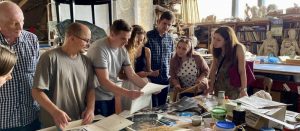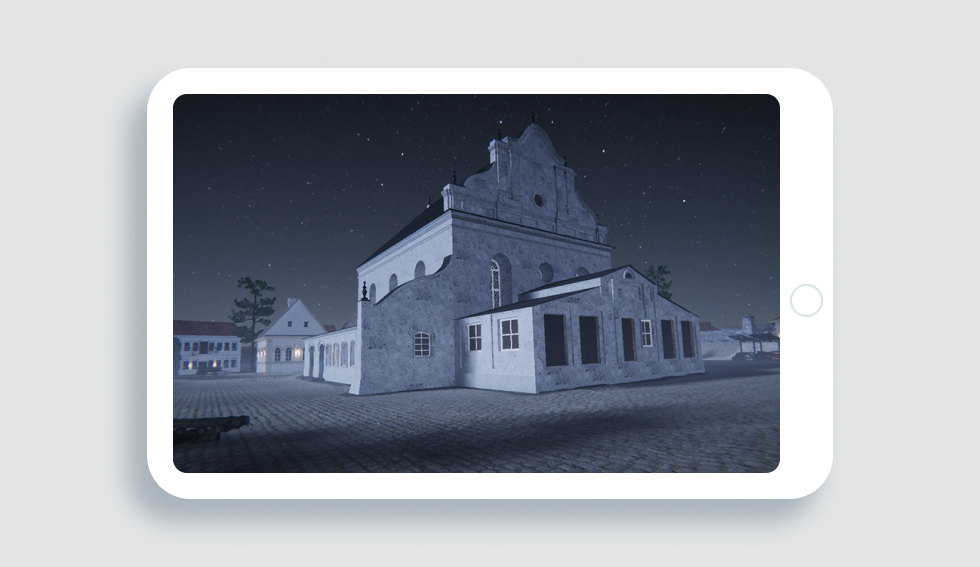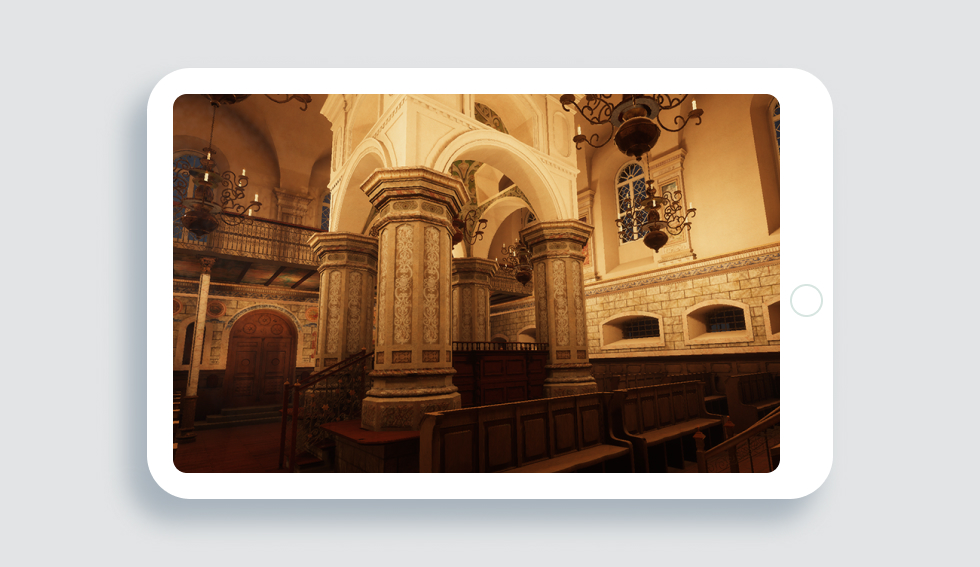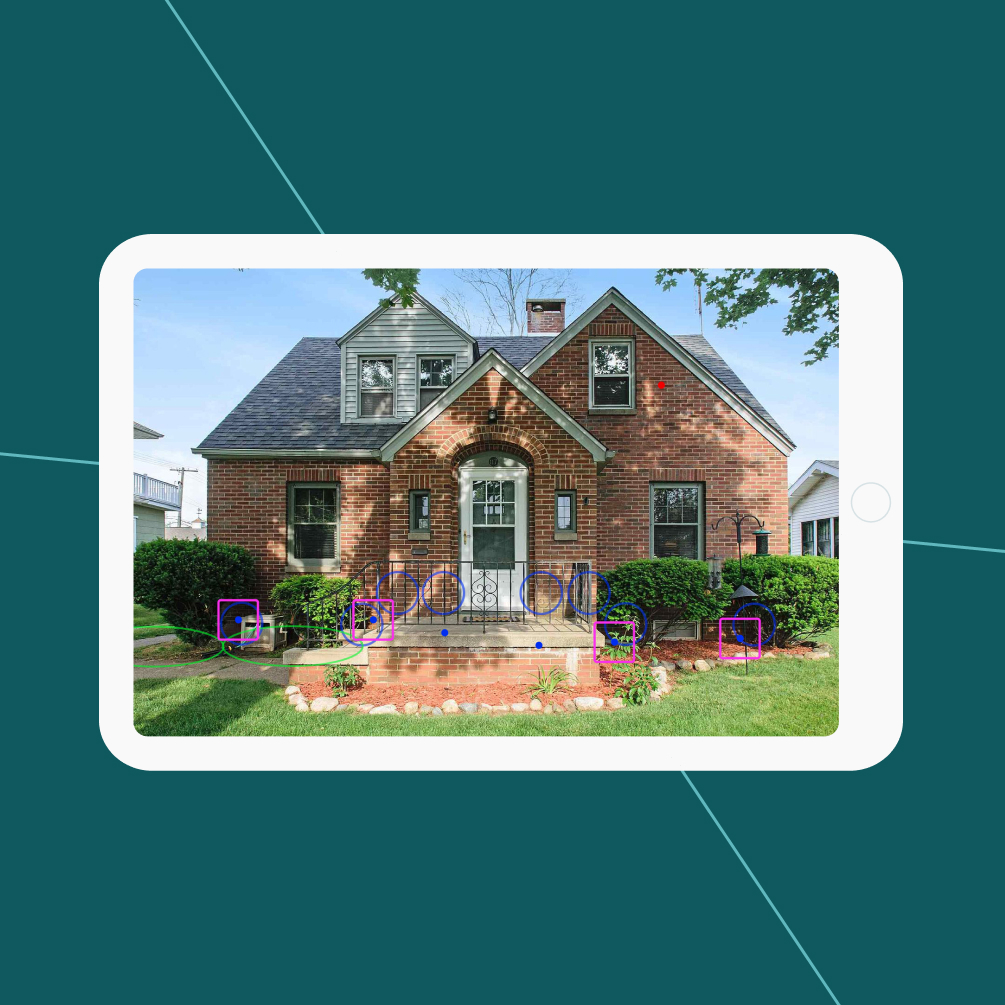Virtual Tour of a Synagogue
Visualization of the Synagogue aimed at the actualization of Jewish heritage.
- Service
- Gamification & Visualization
- Industry
- Public & Social
Customer goal
The Jewish people have always been an integral part of Belarusian history. Before World War II, around 15% of the total Belarusian population were Jews, who made a great contribution to Belarusian culture and the development of Belarusian society.
The Second World War, the Holocaust, mass emigration and Soviet ideology had a devastating effect on the culture of Belarusian Jews: Jewish heritage and its role in the history of Belarus and Europe still remain unknown to modern residents of the region. That’s why Belarusian- Jewish Cultural Heritage Center with the support of the Goethe-Institut Minsk decided to revive the Jewish heritage using modern VR technologies.
Solution
Exposit took part in the Belarus Shtetl project as a Unity development team and implemented VR visualization of the Great Synagogue of Slonim for an interactive exhibition. Our team began the development by visiting the historical building in Slonim to better understand the architecture and create a 3D model of the synagogue as realistic as possible.
We explored the real object, saw elevation plans and historical materials, took photographs of interior and exterior details as well as made photographic materials for creating a 360-view inside and outside the synagogue.

We chose the Unity technology for the 3D model development to allow the project creators to quickly adapt the solution for other devices (for example, as a smartphone app), if necessary.
The VR reconstruction of the synagogue included the following elements of detail:
- geometry, textures for the interior and exterior of the main building;
- minimal environment (trees, grass, etc.);
- exterior without additional outhouses;
- interior reconstruction based on digital materials;
- reconstruction of complex bas-reliefs (coat of arms, columns).
The preparation of high-quality digital materials for detailing allowed us to create a realistic 3D model as the basis for a virtual tour of the Great Synagogue of Slonim. Users can plunge into the architectural context wearing VR glasses and freely move around the structure using navigation and points of interest.

The implemented solution allows users to explore the details of the interior and exterior and get a detailed description of the individual elements. The tour is based on a custom script and is accompanied by background music to create the atmosphere (volume changes depending on the user’s movements).

A virtual tour of the synagogue gives users the opportunity to study in detail the historical background of the Jewish Shtetls of Eastern Europe and to rethink the way Jewish culture has affected the history and development of Belarus.
The implemented visualization solution will be used as a part of the interactive exhibition of the Belarus Shtetl project and will probably become one of the fundamental elements in the creation of the new Jewish Museum in Belarus.
The result fully met the expectations of Maya Katznelson, Founder of the Belarusian- Jewish Cultural Heritage Center who shared her positive review for Exposit’s services on Clutch and DesignRush.
Working with the Exposit team was very comfortable. Colleagues plunged into the complex context of the project, related to history and heritage, and proposed optimal solutions. The deadlines were met, and the result fully met our expectations.

Maya Katznelson
Founder of BJCHC
Key implemented functionality:
Creation of a 3D model of the synagogue in its original form and 360-view of the current state of the building;
- Support for a VR headset without controllers including the ability to interact with elements by holding the viewer gaze (moving to a specific position, viewing information);
- Support for a VR headset with controllers (only motion control by pressing buttons) without interaction with the elements by hands;
- Implementation of a synagogue tour in a virtual environment based on a custom script (movement through points of interest, musical accompaniment).
Immersive VR visualization of the Great Synagogue of Slonim deepens cultural understanding and appreciation, offering a unique educational experience.
Detailed virtual tour of Jewish Shtetls in Eastern Europe supports the preservation of Belarusian-Jewish cultural heritage.
Innovative VR technology stimulates interest in historical sites, promoting tourism and economic growth in the region.



